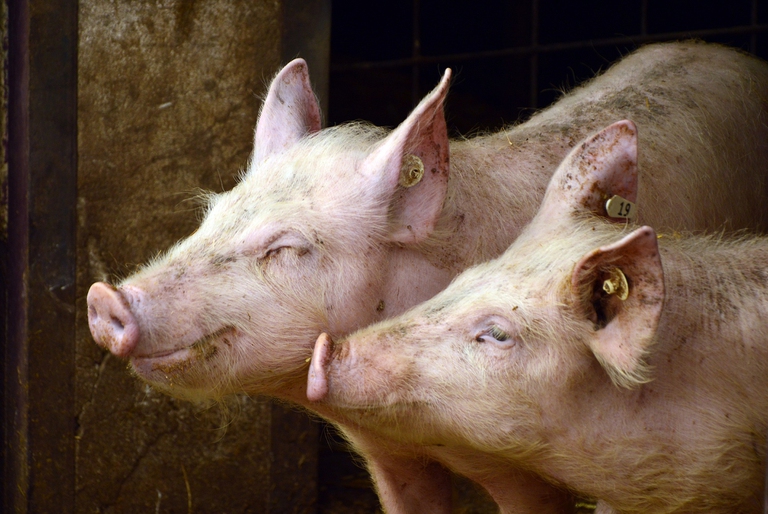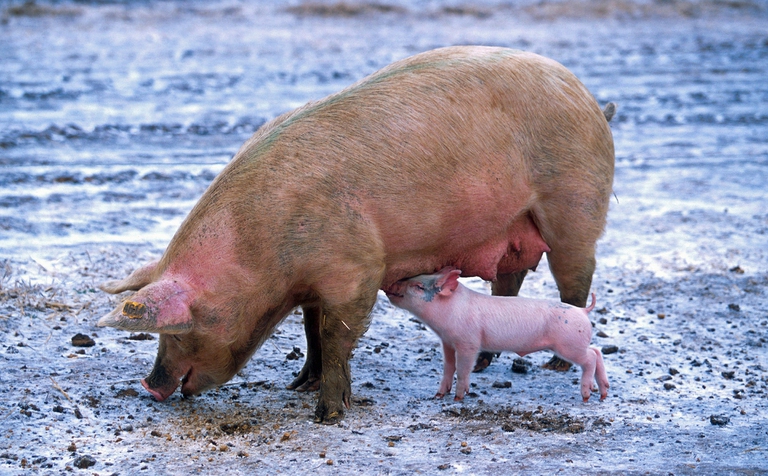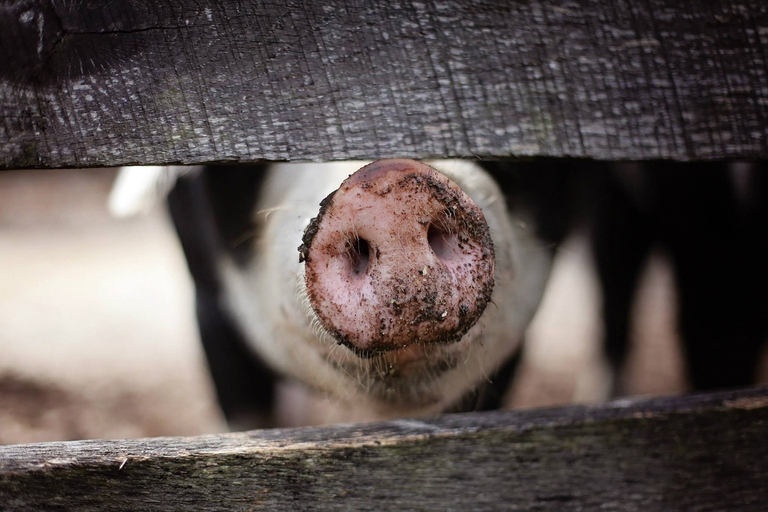https://www.lifegate.it/cosa-ci-insegna-la-storia-della-sfattoria-degli-ultimi
- |
Update October 10, 2022 – After months of controversies, appeals and positions taken by various animal rights associations, the good news arrives.The pigs of the last Sfattoria will not be killed and will be able to continue their peaceful life in the Roman shelter.The regional administrative court of Lazio has in fact accepted the appeal presented by the managers of the animal shelter.
That of Defeat of the last, The shelter for abused animals at the gates of Rome, was - and in part still is - an ugly story that has marred the summer of all those who fight and fight for animal rights.We summarize it briefly to better understand the developments of this story made up of criminal injunctions, approximate verdicts, online protests and animal rights petitions.All this, always and in any case, forgetting the true and only protagonists:the pigs, hybrids and wild boars that inhabit the Sfattoria, saved from mistreatment and torture and from the nightmare of the slaughterhouse.And who, at the moment, are awaiting the final verdict on their fate.

Sfattoria of the last, an all-Italian story
The Sfattoria degli Ultimo is a shelter for mistreated animals located on the outskirts of Rome.I am 140 pigs, Between pigs, hybrids And wild boars, narrowly escaped death and torture.There is also among them Dior, the little pig, which has become popular on Instagram for its docility and friendliness, and which has often been photographed on the streets of Rome.The story began with the discovery of an outbreak of swine fever in the area north of the capital where the shelter is located.The disease is not contagious to men, as I explained in a previous article editorial, but humans can be involuntary carriers, coming into contact with infected pigs and involuntarily infecting others.Economic damage, therefore, if the disease spreads on farms, ruining the work of farmers and their main source of income.
So what did he think of doing? ASL Rome 1 to avoid consequences?Simply slaughter the poor pigs of the Sfattoria, forgetting that the shelter's guests are not intended for human consumption.Explains Ermanno Giudici, blogger and writer:“There are no rules for sanctuaries and therefore the only difference is whether or not the four-legged guests are intended for human consumption.And the Sfattoria pigs are all classified as “not dpa” (therefore not edible and destined for slaughter).The point, however, is not this, but the fact that the animals present could be a vehicle for swine fever as they were placed inside the red zone.It must be objected that a pig or a wild boar can be the subject of contagion, infect or be infected, but it must come into contact with feral pigs. This doesn't seem to be possible for them at all biosecurity measures that Sfattoria declared to have implemented - double fence, entry of operators in protected mode".And the existing protections in the shelter were all duly checked by the authorities.

Kill or not?The news overlaps and chases each other
As the animal rights associations that intervened to oppose the Roman provision pointed out, requests and resolutions followed one another without apparently taking into account the reality of the facts.And the real danger of swine fever.“To date the judge, totally correcting what was previously stated, has not only clarified that the slaughter of pigs is not authorised, but has also forced the health company to consult with the owner of the Sfattoria and with the associations to guarantee with adequate prescriptions animal protection techniques:a real "reversal" compared to the last decree, which prescribed monitoring and possibly culling", declares theOipa (International Animal Protection Organization)
Actually, as he explains to me Ermanno Giudici:“The number of two pigs pets is a measure that concerns subjects kept by private individuals, such as "pets".In fact, the Sfattoria, lacking regulation on sanctuaries, is considered as one stall equated to a farm”.And therefore, in the presence of an outbreak of swine fever, even the pigs and wild boars saved and cared for by volunteers can be killed without problems.

What happens now
As I write, culls are definitively suspended until September 12th, the date on which the collegial decision is set.And, for now, protests and threats on both sides are silent.The indications, apparently, arrived when the volunteers of the Sfattoria had announced that they had been informed that the deadlines for the presentation of the additional documentation proving the biosecurity of the refuge had been brought forward by one day, from 18 al August 17th. Good news, then? Let's hear what Giudici says about this:“My opinion is that the threat to cull all the pigs in the recent Sfattoria was and remains a senseless hypothesis, because it is completely useless in combating the spread of swine fever, and it also concerns animals kept within structures that greatly limit , when they do not totally avoid, contagion between those hosted and wild animals.One needs to be done rule on sanctuaries, finally diversifying them from farms, and which provides for the minimum biosecurity requirements to avoid infections.Common sense and the assessment of situations by health authorities should always be the central point in every situation, without this attention being the consequence of a mobilization of public opinion.Now the new parliament needs to make a clear law that protects sanctuaries and guests."
Let us not forget, however, the ethical problem posed by the recent resolution of Ministry of Health on the subject of pigs and their private detention.The circular - reported byAmnvi (National Association of Italian veterinary doctors)– says there must be an obligation to microchip for pigs owned by private individuals - never in excess of two, as already highlighted - and a necessary registration by their owners and places of detention.Furthermore, sterilization is mandatory to avoid reproduction.And there is a ban on abandonment and the obligation to resort to the vet for any treatment.In short, just as in the case of dogs And cats. It's a shame, however, that dogs and cats are not bred in Italy for food consumption and we don't understand why our friend's little pig can circulate undisturbed on the street and millions of its companions are subjected every day to the torture of intensive farming and slaughterhouse hell.But, perhaps, this is another story.
